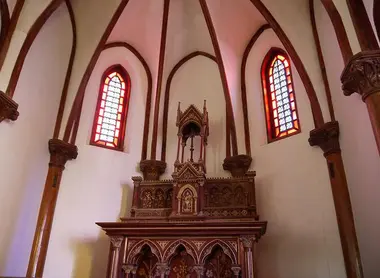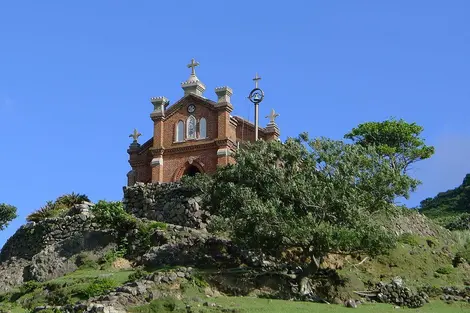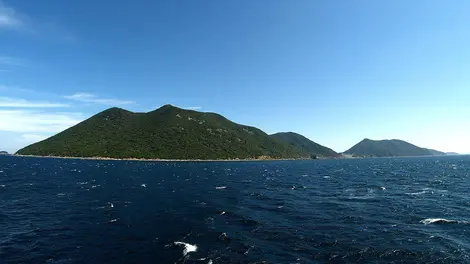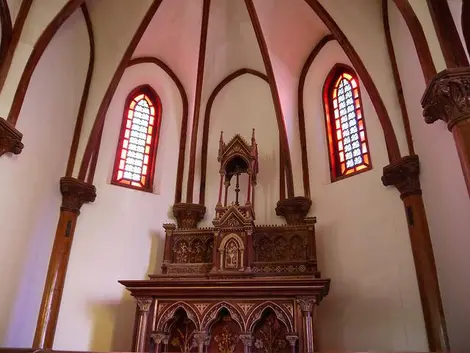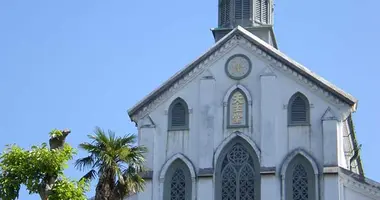Nozaki Island 野崎島
- Published on : 17/10/2017
- by : I.D.O.
- Youtube
The island where time stood still
Nozaki is a small island off Sasebo, in Kyushu. Now uninhabited, in the seventeenth century it was a refuge for the "hidden Christians" in the Nagasaki region fleeing persecution. Though small, (7.36 km2), Nozaki is no less exciting.
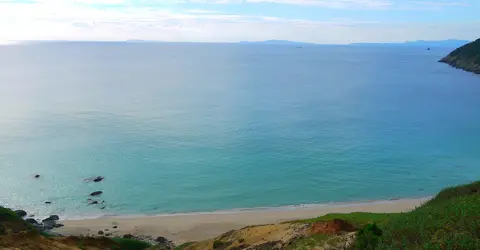
A beach on Nozaki island
Nozaki is a timeless place that you can discover on foot, along hiking trails or steep paths. There are no cafes, restaurants or even shops. Nature is king, and the only inhabitants are the wild deer and Japanese wood pigeons.
A refuge for persecuted Christians
However, this small island was inhabited until the autumn of 2001, and once served as a land of welcome for Christians fleeing persecution in the Edo era (1603-1868). In 1908, their descendants built a church, Nokubi Church, which is considered one of the most beautiful churches in Japan. Built from red brick, it rises, solitary, up a hill that overlooks the Nokubi district, one of the three zones of settlement of the island, which included some two hundred inhabitants. The church is closed, but it's possible to visit by making an appointment at the tourist office on the neighboring island of Ojika.
Read: Martin Scorsese's Silence (2017)
Witness to the human presence on the island for a very long time, the shinto shrine on Okinokojima is more than 1,300 years old. It faces the shrine of the same name on the island of Ojika. Located north of Nozaki, it is quite difficult to access but the atmosphere and the view are worth it. Just behind Okinokojima shrine, in the midst of dense vegetation, there are megalithic stones, called oeishi. Two 24-meter-high rocks support a covering slab of 5 by 3 meters. This is a great mystery of Nozaki, as no-one knows whether these formations are natural or artificial.
A welcoming island
Near the port of Nozaki was one of the three places the island's inhabitants once settled, also named Nozaki. Today, this is where most of the boats arrive, making it the busiest place on the island. People fish here, and you can even sleep at the nearby Nature-learning village, a 20-minute walk away. Here the wooden buildings of a former elementary school, closed in 1985, have been renovated and converted into accommodation. It's possible to rent rooms for groups, or single rooms for private use (bathroom and toilet are shared), but there's no restaurant or shop. Don't forget to bring your own drinks and food; it is possible to use the communal kitchen. Part of the income from accommodation is devoted to the protection and preservation of the island's environment and cultural properties. Reservations must be made at least one week in advance. The Nature-learning village is a one-minute walk from Nokubi Church.
Read also: Ojika village
Nokubi beach, 300 meters long with cobalt blue waters, is perfect for swimming or snorkeling. In the morning, you can admire the sunrise. Only low walls supporting old terraced rice fields remain of the presence of the "hidden Christians" and their descendants who once lived in the district of Funamori, in the south of the island. The beauty of the site has a melancholy side when you imagine the lives of the 600 inhabitants who inhabited this beautiful wild place.



